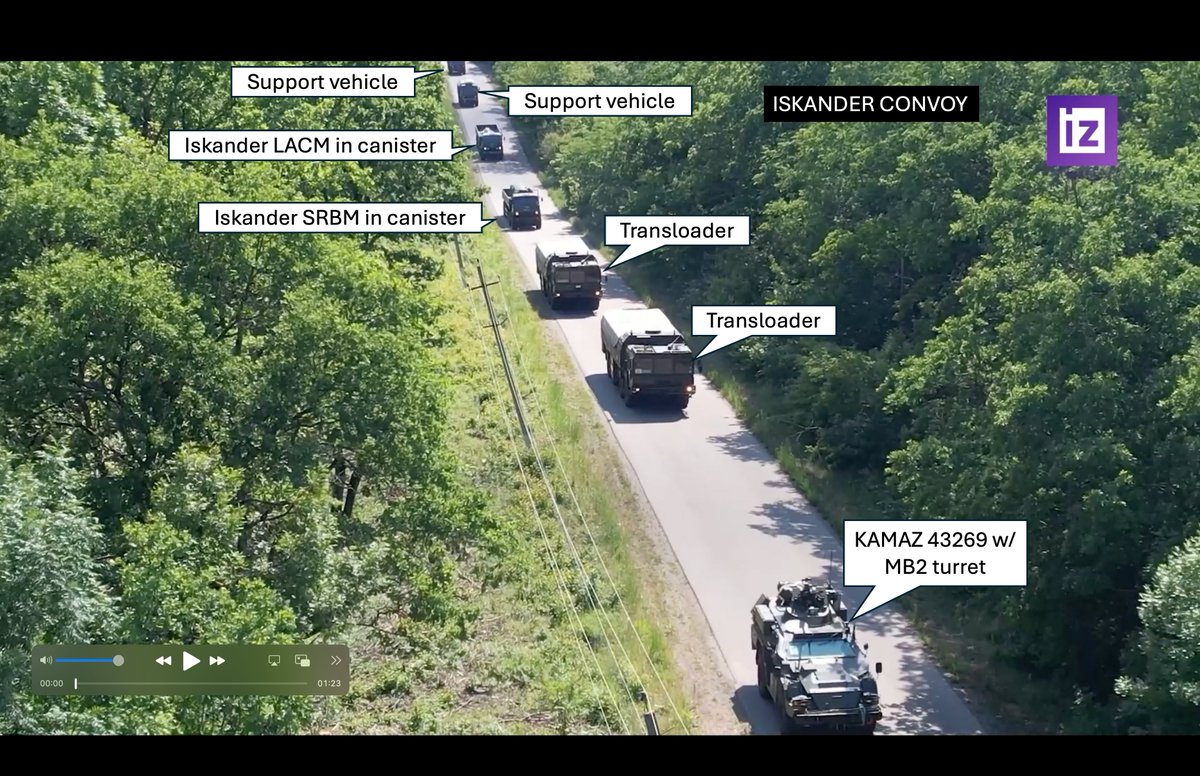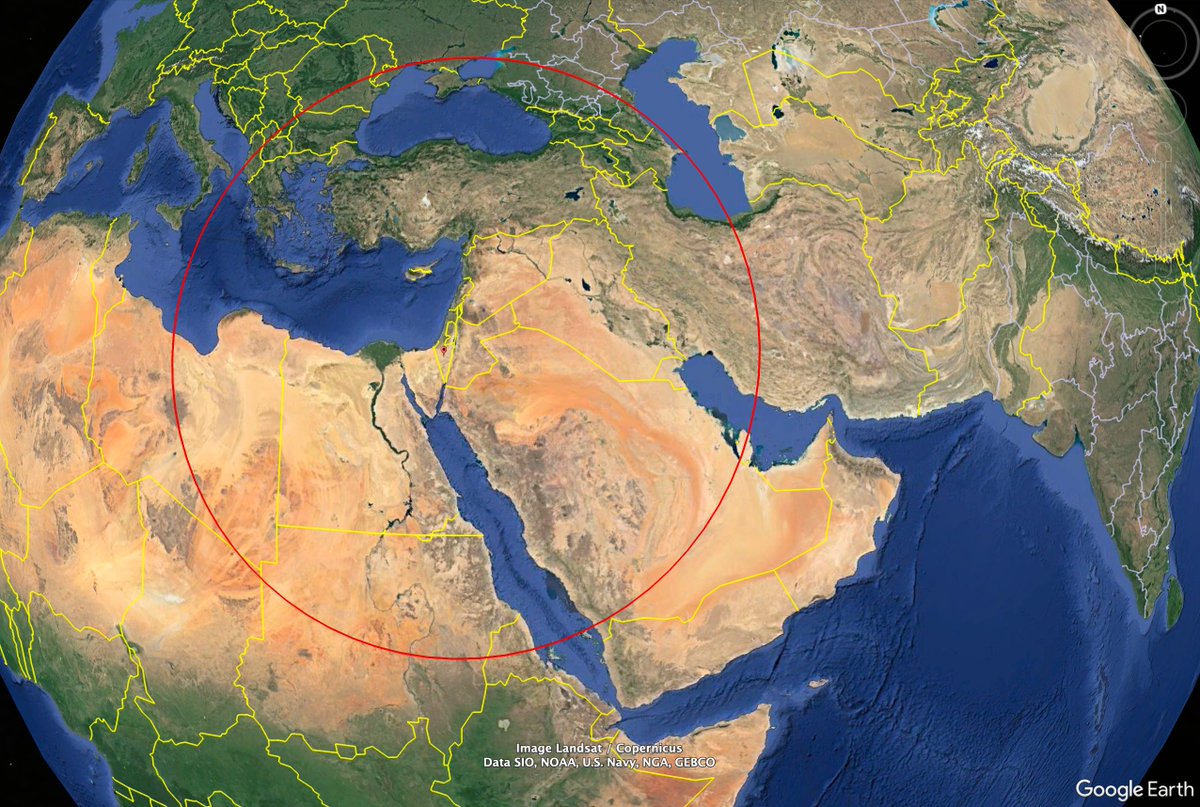Russia conducted an exercise in which it practiced starting a nuclear war. A short thread.
iz.ru/1699925/2024-0…
iz.ru/1699925/2024-0…
We get to see a convoy of Iskander vehicles -- a very rare security vehicle, some transloaders, some containerized missiles (ballistic and cruise) and some support vehicles. 

We also get to see what seems to be a warhead convoy, although we don't have great reference imagery. Still, we see a different, also very rare security vehicle and some mundane looking trucks, which isn't much but its what we'd expect for the 12 GUMO.




Russia blurred the warheads on the Iskander SRBMs --which looked like inert training models; see the fins -- so this is very theatrical but probably uneccessary. 

We see a new (to us) canister for the Iskander cruise missile. The ports are in different places than in any version we've seen before. The warhead and guidance are located in different places in the nuclear and conventional versions. That *may* be why the ports are different. 

We also see some pretty normal pre-flight operations for a Tu-22M Backfire bomber and a MiG-31K. Not much to see there, but then again I am not a big airplane guy. 

So, yeah, the Russians really practiced starting a nuclear war and went out of their way to make sure that is super, duper clear. Good times.
• • •
Missing some Tweet in this thread? You can try to
force a refresh














